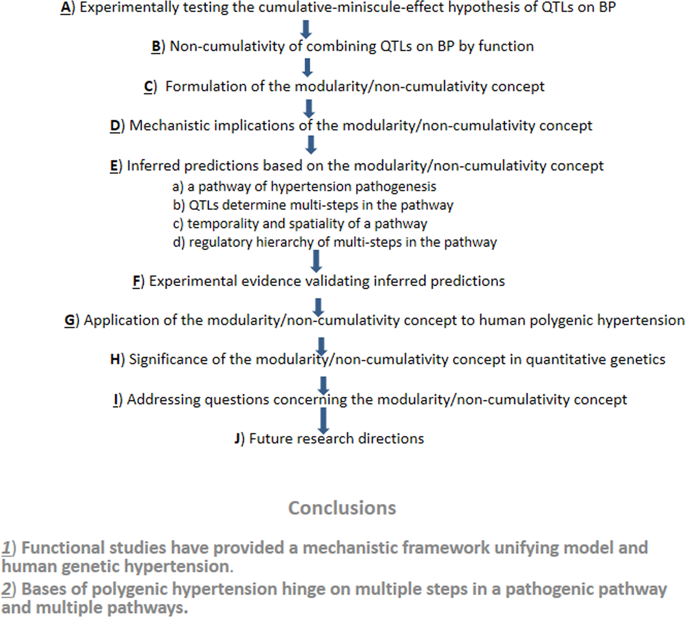当前位置:
X-MOL 学术
›
J. Hum. Hypertens.
›
论文详情
Our official English website, www.x-mol.net, welcomes your
feedback! (Note: you will need to create a separate account there.)
Modularity/non-cumulativity of quantitative trait loci on blood pressure.
Journal of Human Hypertension ( IF 2.7 ) Pub Date : 2020-03-02 , DOI: 10.1038/s41371-020-0319-3 Alan Y Deng 1
Journal of Human Hypertension ( IF 2.7 ) Pub Date : 2020-03-02 , DOI: 10.1038/s41371-020-0319-3 Alan Y Deng 1
Affiliation

|
Large numbers of quantitative trait loci (QTLs) for blood pressure (BP) exist and have long been thought to function by accumulating their individual miniscule effects. Recent experimental evidence in the functional biology of BP control has tested this intuitive assumption. A new paradigm has emerged that BP is biologically determined in modularity by multiple QTLs. Functionally, when a master regulator is taken out, distinct epistatic modules organize biological 'blocks' into a genetic architecture, and serve as basic functional cores from which numerous QTLs act together to physiologically formulate BP. An epistatic module refers to the grouping of QTLs that perform their functions epistatically to one another and influence BP as a group. The modularity mechanism framework indicates that BP as a quantitatively-measured trait is not cumulatively determined and implies that the QTLs in the same epistatic module may participate in the same pathway leading to the BP control, and the QTLs from separate epistatic modules may act in divergent but parallel pathways. This mechanistic conceptualization and subsequent validations synergize with anticipated demands from current human epidemiological studies, since the outcome from them primarily implicates single nucleotide polymorphisms with unknown functions. Eventually, functional understandings of the human results have to be realized by their pathogenic directionality and mechanisms biologically controlling BP.
更新日期:2020-04-24









































 京公网安备 11010802027423号
京公网安备 11010802027423号